By Father Justin of Sinai, Librarian
The Monastery
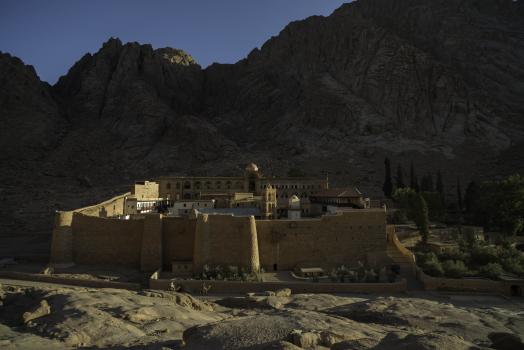
Sinai is a harsh desert of precipitous granite mountains and narrow, rock strewn valleys. In the scriptures it is called ‘the waste, howling wilderness’ (Deuteronomy 32:10). In this severe and barren land, it is difficult to sustain life. And yet, it was here that hermits and anchorites came in the latter third and early fourth centuries, searching for places of solitude where they might pass their lives in prayer and fasting.
But Sinai is more than a harsh desert. For it was here that God revealed himself in a special way to the prophet Moses, first at the bush that burned with fire without being consumed, and then at the peak of Sinai, where he received the Tablets of the Law. It was here that God said to Moses, ‘the place on which you are standing is holy ground’ (Exodus 3:5).
In the fourth century, this desert also became the goal of pilgrims, who made their way to Jerusalem, and if they had the time, the means, and the stamina, would continue on to Sinai. When Egeria and her fellow pilgrims visited the area around the year 383, as we read in Egeria’s account, they witnessed a flourishing monastic life, and were even then following an established pilgrim route.
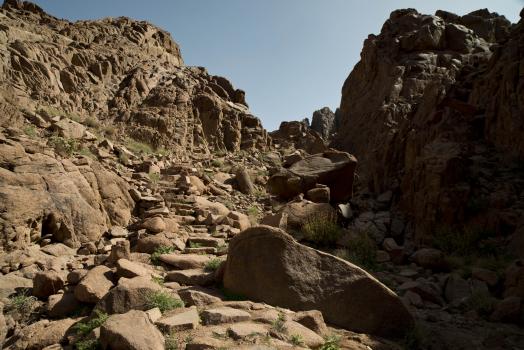
In the middle of the sixth century, the emperor Justinian ordered the construction of a basilica and high surrounding walls at the traditional site of the Burning Bush. The walls and the church have stood ever since.
The area came under Arab rule in the seventh century. But there is evidence of pilgrimage to Sinai during the seventh, eighth, and ninth centuries. Monks also continued to come to Sinai, attracted by its austerity, its Biblical associations, and its reputation as an established center of monasticism.
In all of its history, the Sinai monastery has never been destroyed or abandoned, an astonishing record of continuity. Today, a small community of monks maintains the cycle of daily services, with time for reading and prayer, following the ancient way of life. And pilgrims continue to make the trek to Sinai, to receive the blessing of this holy place, following in the footsteps of those who have been coming here for over seventeen hundred years.
The Library
In the fourth century, Egeria attended services at the summit of Mount Sinai, at the Chapel of the Prophet Elias a short distance from the summit, and at the Chapel of the Burning Bush in the valley below. She commented approvingly on the passages of scripture that were read concerning each of these holy sites. In this, we may assume the existence at Sinai, in the fourth century, of manuscripts of the scriptures, the services, and other spiritual texts.
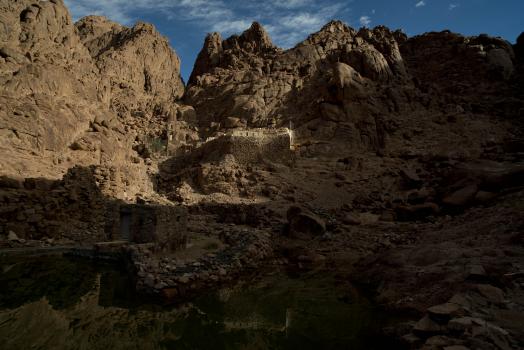
Saint John Climacus came to Sinai in the sixth century, when he was only sixteen. He lived as a solitary for forty years, before being elected abbot of Sinai in the seventh century. In his life, it is recorded that ‘he prayed much and wrote books’. This is evidence for the production of manuscripts at Sinai in the seventh century.
The earliest Sinai manuscripts were practical texts, for use in the services, or to inspire the monks who lived in the area. Materials that would allow for the production of manuscripts were brought to the area with great difficulty. The deterioration of such texts through use was checked by the dry and stable climate, and the extreme isolation of the monastery protected it from destruction. In this way, the present library of Saint Catherine’s Monastery had its beginnings.
The library today contains some 3300 manuscripts in the Old Collection, not to mention the manuscripts that came to light in 1975, collectively known as the New Finds, and the many documents in the archives. The monastery has been predominantly Greek throughout its history, and this is reflected in the library. But it has also been the destination of monks and pilgrims from many lands, who left behind manuscripts in their languages, both as gifts to the monastery and for use by future pilgrims. This accounts for manuscripts in eleven languages, with important collections in Arabic, Syriac, Christian Palestinian Aramaic, Georgian, and Slavonic.
The Sinai manuscripts continue to be essential for the study of the scriptures, the writings of the early Fathers of the Church, and the history of the services. They also include manuscripts of classical Greek texts, especially of important medical texts. The bindings of the Sinai manuscripts are only now being studied. They reveal a progression of different techniques over the centuries. Binding tools and colophons often allow us to identify the workshops in which the manuscripts were bound.
A few of the Sinai manuscripts are splendid works of art, with gilded letters and brilliant illuminations, created in Constantinople in the tenth, eleventh, and twelfth centuries, when the City was at its height as the centre of culture and devotion. But no less significant are the humble manuscripts written at Sinai, often on reused parchment, bound between rough boards, the pages stained from long use, a witness to the deprivations and austerity of Sinai, and to the generations of monks who have maintained the life of devotion and the cycle of daily services at this holy place.
The Sinai Palimpsests
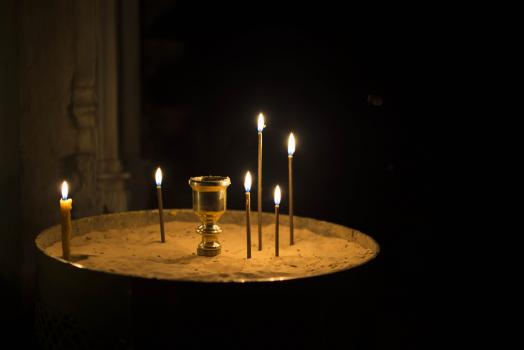 Parchment is made from animal skins that have been soaked in lime and then stretched on a frame and sheared until they are smooth and even. The production of parchment is a highly specialized craft. It has always been expensive, and sometimes, difficult to find. But it can be used to write a manuscript that is beautiful, and that will last for centuries.
Parchment is made from animal skins that have been soaked in lime and then stretched on a frame and sheared until they are smooth and even. The production of parchment is a highly specialized craft. It has always been expensive, and sometimes, difficult to find. But it can be used to write a manuscript that is beautiful, and that will last for centuries.
If a scribe needed to write a text, but there was no parchment available, he could take a manuscript that was considered less important and erase the text, writing the new text over the old. This is what is known as a palimpsest. Sinai was quite isolated from the seventh to the eleventh centuries, and the reuse of parchment was often the only way to create a new manuscript. We know of over one hundred sixty Sinai manuscripts with palimpsest text. Faint traces of the original text very often survive beneath the later text. In many instances, it is the original text that is of greater interest to scholars today.
In the nineteenth century, it was common to apply chemical reagents in an effort to enhance the original script. This was often very destructive to the manuscript. From the early twentieth century, it was known that ultraviolet light could be helpful in recovering the underlying text, exploiting the difference in fluorescence between the different inks and the parchment. But it is only in the last few years that there have been important developments in what is called multi-spectral imaging, in which a text is photographed with many different narrow bandwidths of light. The resulting photographs are then processed using sophisticated algorithms. Results are not guaranteed, but very often, the underlying script becomes clear and legible, where this had not seemed possible before. In speaking about the work of imaging scientists, we must not overlook the considerable scholarship that is also needed to recover these texts.
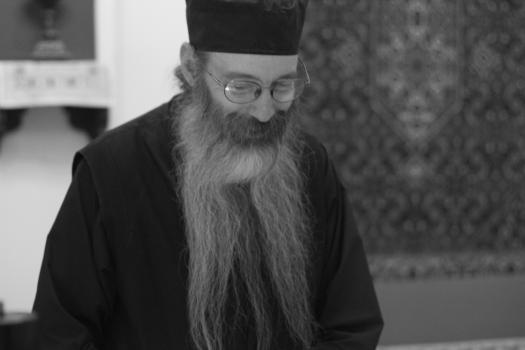
The Sinai palimpsests are of the utmost importance for scholars. The underlying text of the Codex Sinaiticus Syrus (Syriac 30) contains the four Gospels in Old Syriac, a translation made in the second century that only survives in one other manuscript in the world. Sinai manuscripts preserve the unique written examples of a language called Caucasian Albanian, that was spoken in the Caucasus mountains to the east of Georgia. Important texts have been recovered in Greek, Christian Palestinian Aramaic, Syriac, Georgian, Arabic, and Latin. These include liturgical and patristic texts, as well as classical, historical, and medical texts.
Each of these texts is important in its own right. But when considered together, they can tell us much about the history of Sinai, from a time where there are few historical records. They are a witness to important scribal activity at this remote site. They also show us that Sinai remained the destination of pilgrims from throughout Christendom. Traditions of learning continued in a world that was more interconnected than scholars have often been willing to grant. In all of these ways, the Sinai palimpsests still have much to teach us.




